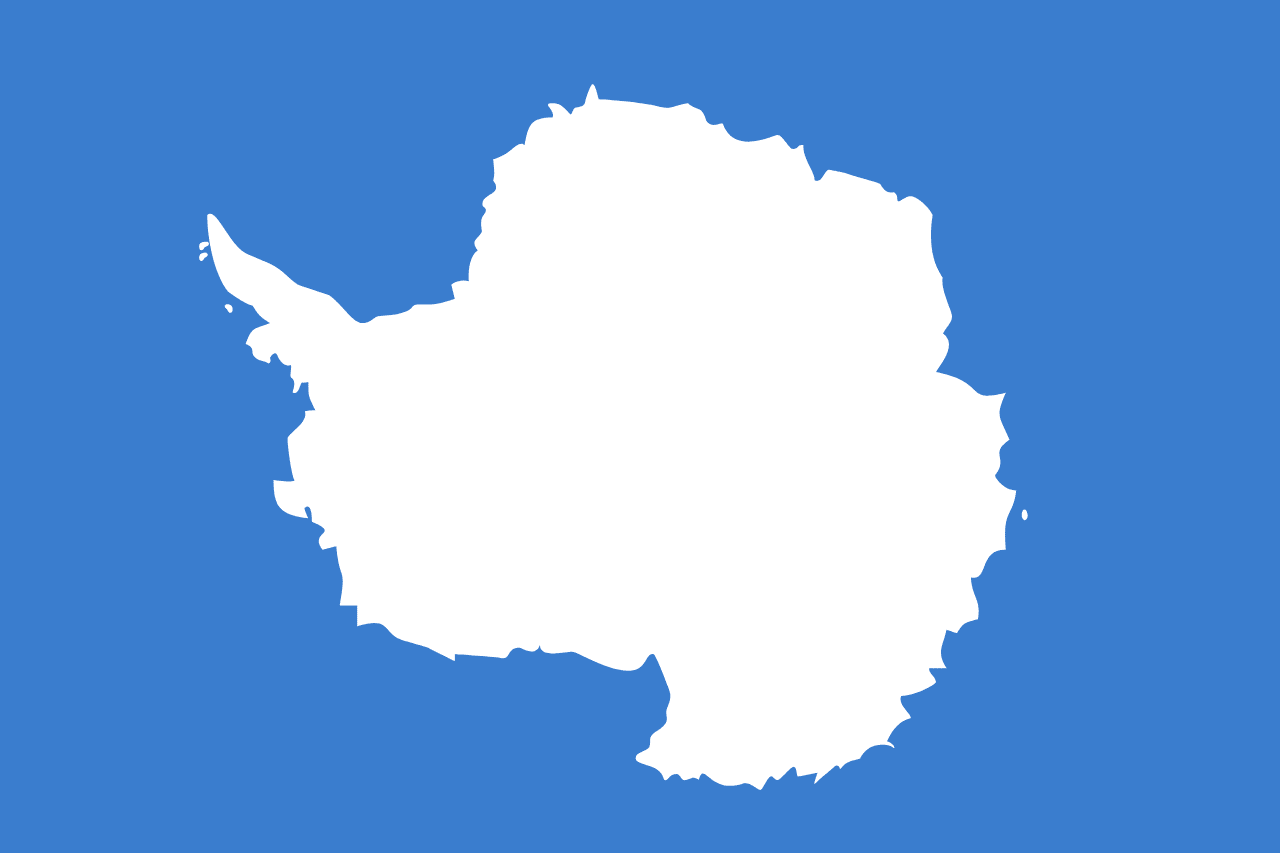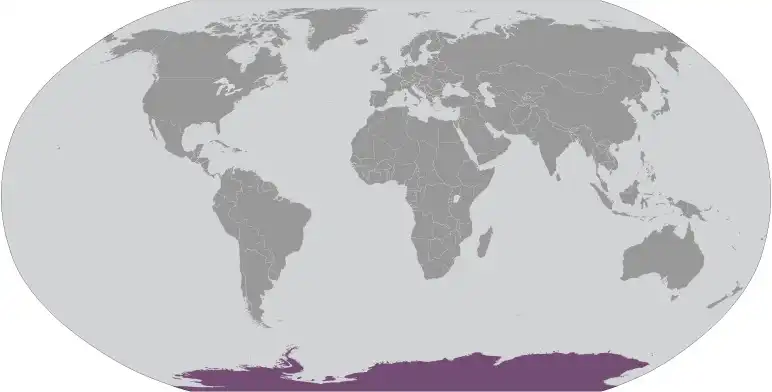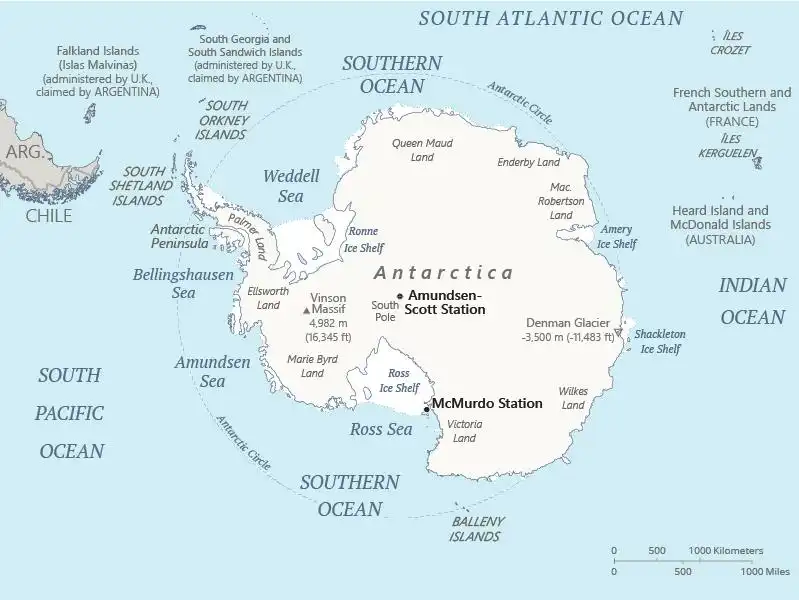
Antarctica Country Profile
Key Facts of Antarctica

| Government type: | Antarctic Treaty Summary - the Antarctic region is governed by a system known as the Antarctic Treaty system; the system includes: 1. the Antarctic Treaty, signed on 1 December 1959 and entered into force on 23 June 1961, which establishes the legal framework for the management of Antarctica, 2. Measures, Decisions, and Resolutions adopted at Antarctic Treaty Consultative Meetings, 3. The Convention for the Conservation of Antarctic Seals (1972), 4. The Convention on the Conservation of Antarctic Marine Living Resources (1980), and 5. The Protocol on Environmental Protection to the Antarctic Treaty (1991); the Antarctic Treaty Consultative Meetings operate by consensus (not by vote) of all consultative parties at annual Treaty meetings; by January 2024, there were 56 treaty member nations: 29 consultative and 27 non-consultative; consultative (decision-making) members include the seven nations that claim portions of Antarctica as national territory (some claims overlap) and 22 non-claimant nations; the US and Russia have reserved the right to make claims; the US does not recognize the claims of others; Antarctica is administered through meetings of the consultative member nations; measures adopted at these meetings are carried out by these member nations (with respect to their own nationals and operations) in accordance with their own national laws; the years in parentheses indicate when a consultative member-nation acceded to the Treaty and when it was accepted as a consultative member, while no date indicates the country was an original 1959 treaty signatory; claimant nations are - Argentina, Australia, Chile, France, NZ, Norway, and the UK; nonclaimant consultative nations are - Belgium, Brazil (1975/1983), Bulgaria (1978/1998), China (1983/1985), Czechia (1962/2014), Ecuador (1987/1990), Finland (1984/1989), Germany (1979/1981), India (1983/1983), Italy (1981/1987), Japan, South Korea (1986/1989), Netherlands (1967/1990), Peru (1981/1989), Poland (1961/1977), Russia, South Africa, Spain (1982/1988), Sweden (1984/1988), Ukraine (1992/2004), Uruguay (1980/1985), and the US; non-consultative members, with year of accession in parentheses, are - Austria (1987), Belarus (2006), Canada (1988), Colombia (1989), Costa Rica (2022) Cuba (1984), Denmark (1965), Estonia (2001), Greece (1987), Guatemala (1991), Hungary (1984), Iceland (2015), Kazakhstan (2015), North Korea (1987), Malaysia (2011), Monaco (2008), Mongolia (2015), Pakistan (2012), Papua New Guinea (1981), Portugal (2010), Romania (1971), San Marino (2023), Slovakia (1962/1993), Slovenia (2019), Switzerland (1990), Turkey (1996), and Venezuela (1999); note - Czechoslovakia acceded to the Treaty in 1962 and separated into the Czech Republic and Slovakia in 1993; Article 1 - area to be used for peaceful purposes only; military activity, such as weapons testing, is prohibited, but military personnel and equipment may be used for scientific research or any other peaceful purpose; Article 2 - freedom of scientific investigation and cooperation shall continue; Article 3 - free exchange of information and personnel, cooperation with the UN and other international agencies; Article 4 - does not recognize, dispute, or establish territorial claims and no new claims shall be asserted while the treaty is in force; Article 5 - prohibits nuclear explosions or disposal of radioactive wastes; Article 6 - includes under the treaty all land and ice shelves south of 60 degrees 00 minutes south and reserves high seas rights; Article 7 - treaty-state observers have free access, including aerial observation, to any area and may inspect all stations, installations, and equipment; advance notice of all expeditions and of the introduction of military personnel must be given; Article 8 - allows for jurisdiction over observers and scientists by their own states; Article 9 - frequent consultative meetings take place among member nations; Article 10 - treaty states will discourage activities by any country in Antarctica that are contrary to the treaty; Article 11 - disputes to be settled peacefully by the parties concerned or, ultimately, by the International Court of Justice; Articles 12, 13, 14 - deal with upholding, interpreting, and amending the treaty among involved nations; other agreements - some 200 measures adopted at treaty consultative meetings and approved by governments; the Protocol on Environmental Protection to the Antarctic Treaty was signed 4 October 1991 and entered into force 14 January 1998; this agreement provides for the protection of the Antarctic environment and includes five annexes that have entered into force: 1) environmental impact assessment, 2) conservation of Antarctic fauna and flora, 3) waste disposal and waste management, 4) prevention of marine pollution, 5) area protection and management; a sixth annex addressing liability arising from environmental emergencies has yet to enter into force; the Protocol prohibits all activities relating to mineral resources except scientific research; a permanent Antarctic Treaty Secretariat was established in 2004 in Buenos Aires, Argentina |
| Capital: | - |
| Languages: | - |
Antarctica Demographic Data
Antarctica Economy Statistics
Economic overview of Antarctica
-Antarctica Real GDP (purchasing power parity) in Billion $
no data
Antarctica Real GDP per capita in $
No data
Geography of Antarctica
Map of Antarctica

Land and Water Distrubtion of Antarctica
There are no water-covered areas.
Natural Resources of Antarctica
- iron ore ⛓️
- chromium 🟩
- copper 🟧🪙
- gold 💰
- nickel 🪙
- platinum and other minerals 🪙
- and coal and hydrocarbons have been found in small noncommercial quantities; mineral exploitation except for scientific research is banned by the Environmental Protocol to the Antarctic Treaty; krill ⚫
- icefish 🐟
- toothfish 🐟
- and crab have been taken by commercial fisheries 🐟
- which are managed through the Commission for the Conservation of Antarctic Marine Living Resources (CCAMLR)
Climate inAntarctica
the coldest, windiest, and driest continent on Earth; severe low temperatures vary with latitude, elevation, and distance from the ocean; East Antarctica is colder than West Antarctica because of its higher elevation; Antarctic Peninsula has the most moderate climate; higher temperatures occur in January along the coast and average slightly below freezing; summers characterized by continuous daylight, while winters bring continuous darkness; persistent high pressure over the interior brings dry, subsiding air that results in very little cloud cover
History of Antarctica - a Summary
Speculation over the existence of a "southern land" was confirmed in the early 1820s when British and American commercial operators and British and Russian national expeditions began exploring the Antarctic Peninsula region and other areas south of the Antarctic Circle. In 1840, it was finally established that Antarctica was indeed a continent and not merely a group of islands or an area of ocean. Several exploration "firsts" were achieved in the early 20th century, but the area saw little human activity. Following World War II, however, the continent experienced an upsurge in scientific research. A number of countries have set up a range of year-round and seasonal stations, camps, and refuges to support scientific research in Antarctica. Seven have made territorial claims, with two maintaining the basis for a claim, but most countries do not recognize these claims. In order to form a legal framework for countries' activities on the continent, an Antarctic Treaty was negotiated that neither denies nor recognizes existing territorial claims; it was signed in 1959 and entered into force in 1961. Also relevant to Antarctic governance are the Environmental Protocol to the Antarctic Treaty and the Convention on the Conservation of Antarctic Marine Living Resources.
